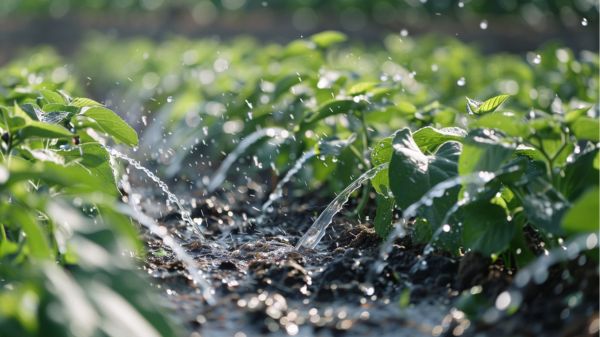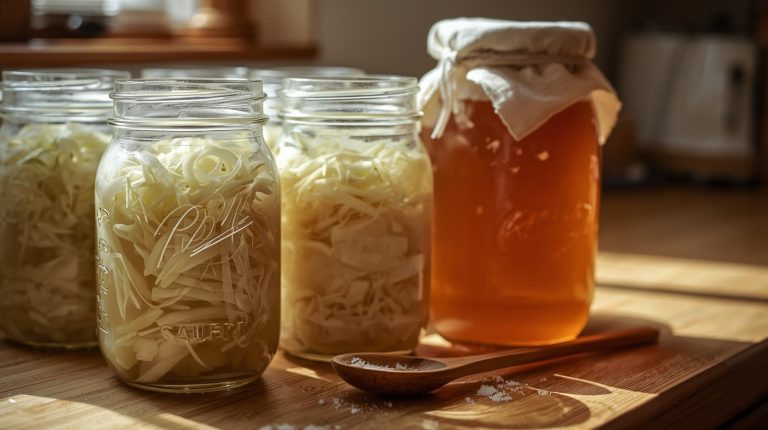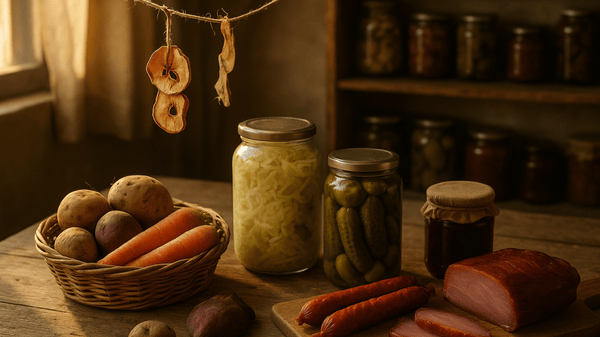As we face increasing environmental challenges, sustainable practices in home gardening are becoming more essential. Among these, water conservation strategies for home gardens is particularly significant due to the escalating issues of water scarcity.
Adopting water-saving techniques, such as selecting native plant species, optimizing irrigation timing, and employing advanced watering systems like drip irrigation, can substantially reduce water usage while maintaining vibrant gardens.
These methods not only support ecological health but also offer economic benefits by reducing water bills. The question then arises: how can these practices be integrated effectively into our daily gardening routines to maximize their benefits while minimizing their impact on natural resources?
Key Takeaways
- Select native and drought-resistant plants to reduce irrigation needs and enhance local biodiversity.
- Water gardens early in the morning to minimize evaporation and promote deep root growth.
- Implement drip irrigation and soaker hoses to direct water efficiently to plant root zones.
- Use organic mulches like wood chips or straw to conserve soil moisture and suppress weed growth.
- Harvest rainwater with barrels or cisterns to decrease dependency on municipal water supplies.
Selecting Native Plants
Incorporating native plants into a home garden greatly enhances water efficiency owing to their adaptation to the local climate and reduced need for irrigation compared to non-native species. These plants are inherently attuned to their environment, possessing deeper root systems that tap into subsoil moisture reserves, considerably diminishing the need for supplemental watering.
This deep-rooted characteristic not only conserves water but also fortifies the plant during droughts, showcasing a robust form of resilience that is essential for sustainable gardening practices.
Further, native plants maintain ecological harmony by fostering biodiversity. They provide fundamental habitats and food sources for local wildlife and pollinators, thereby reinforcing the natural ecosystem.
This biodiversity is important for the biological controls that manage pest populations and reduce the reliance on chemical interventions, enhancing the garden’s natural balance and health. Additionally, the built-in pest resistance of native species promotes healthier plant growth without the need for synthetic chemicals, further contributing to a sustainable gardening environment.
Moreover, the low maintenance nature of native plants presents a liberating gardening approach. Gardeners can achieve a flourishing landscape without the labor-intensive care that non-native plants often require.
This freedom allows gardeners to focus more on enjoying their garden spaces and less on continual upkeep, aligning with a lifestyle that values both personal well-being and environmental stewardship.
Timing Your Watering
Optimizing the timing of watering in home gardens is essential for maximizing water efficiency and plant health. Watering should be strategically scheduled during early morning hours, ideally between 6 a.m. and 10 a.m. This timing considerably reduces water loss due to evaporation, allowing plants to absorb more moisture effectively before the temperature rises.
Early morning watering also aligns with the natural uptake of water by plants, promoting deeper root growth and enhanced drought resistance. Incorporating drought-resistant plants into your garden can further enhance water usage, as these varieties require less frequent watering, contributing to overall water conservation.
Additionally, to avoid the onset of fungal diseases, it is imperative to steer clear of evening watering. Moist conditions overnight can create a conducive environment for pathogens, undermining plant health.
Instead, integrating a rain gauge can revolutionize water conservation efforts. By accurately measuring rainfall, gardeners can adjust watering schedules based on actual moisture levels, ensuring that plants receive ideal hydration without excess.
To further improve water conservation, grouping plants with similar water needs is advisable. This method facilitates efficient watering by ensuring that only the areas that require moisture receive it, thereby preventing wasteful overwatering.
Employing soil moisture indicators can guide when to water, maintaining soil moisture at an ideal range of 40-70% for optimal plant health.
Implementing Drip Irrigation
Implementing drip irrigation in home gardens offers significant benefits, chiefly the precise delivery of water directly to plant root zones, which can enhance water efficiency by up to 70% compared to conventional sprinkling methods.
By reducing overall water consumption, this method aligns with sustainable water management practices that support eco-friendly landscaping initiatives.
Setting up a drip irrigation system involves customizing the layout to accommodate specific garden dimensions and plant types, which guarantees that water is distributed according to individual plant needs and varying soil conditions.
In addition, integrating timers into these systems allows for the automation of watering schedules, which adapt to seasonal fluctuations and help prevent excessive water use.
Drip Irrigation Benefits
Adopting a drip irrigation system in home gardens offers numerous benefits, vital among them being significant water conservation. Drip irrigation systems deliver water directly to the roots of plants, optimizing moisture delivery and minimizing waste. This targeted approach can reduce water usage by up to 70% compared to conventional sprinkler systems, which often lose a significant amount of water to evaporation and runoff.
Moreover, by guaranteeing water is used more efficiently, drip irrigation supports plant health through promoting deeper root growth. This is due to the consistent, direct supply of water to the root zone, which encourages healthy development and reduces the likelihood of waterlogging, a common issue with less precise watering methods.
The customization aspect of drip systems further enhances their efficacy, allowing gardeners to tailor watering schedules and volumes to the specific needs of different plants, thereby optimizing growth conditions.
The benefits extend beyond plant and water conservation; drip irrigation also offers practical advantages. Automated watering via timers not only saves time but also guarantees regular watering, essential during busy periods or inattention.
Consequently, drip irrigation stands out as an effective, sustainable choice for conscientious gardeners looking to optimize their water use and cultivate healthier plants.
Setting Up Drip Systems
Having explored the benefits of drip irrigation, it is important to understand the practical steps involved in setting up such a system effectively in your home garden.
Drip irrigation systems are designed to deliver water directly to the root zones of plants, considerably reducing water usage by up to 70% compared to traditional methods. This precise delivery minimizes evaporation and runoff, making it a superior choice for water conservation.
To implement a system, start by laying out drip tubing throughout your garden, guaranteeing it reaches all plant areas.
Attach emitters at intervals suitable for your plants’ spacing and water needs. These emitters will regulate the flow, allowing you to maintain ideal water flow directly to the plant roots.
Incorporating a timer can automate the watering schedules, providing consistency in moisture levels and further reducing water waste.
Additionally, grouping plants with similar water requirements enhances system efficiency. This strategy allows for tailored watering schedules that meet specific needs, maximizing your garden’s hydration without excess.
Regular maintenance, including checking for clogs and flushing the system, is essential to guarantee the longevity and effectiveness of your drip irrigation setup.
Utilizing Organic Mulches
Organic mulches offer a multifaceted approach to sustainable gardening by conserving water, enhancing soil health, and suppressing weeds.
While materials such as wood chips, straw, and grass clippings are commonly used, each type of mulch serves specific functions and varies in its water retention capabilities and rate of decomposition.
Proper application, involving a layer of 2-4 inches of mulch around plants, is essential for maximizing these benefits and sustaining an eco-friendly garden environment.
Benefits of Organic Mulches
Utilizing organic mulches such as wood chips, straw, or grass clippings offers significant water conservation benefits in home gardens. These materials serve as a protective barrier, reducing soil evaporation by up to 70% on hot days, thereby minimizing water loss and preserving essential moisture.
This effectiveness can be accurately tracked by using a moisture meter, which helps gardeners maintain ideal hydration levels without overwatering.
As these organic mulches gradually decompose, they enrich the soil with organic matter, improving both soil structure and nutrient content. This enhancement boosts soil health, enabling it to retain moisture more efficiently and support robust plant growth.
The suppression of weed growth is another important benefit, as weeds compete with garden plants for water and nutrients. Reduced weed presence means less watering is required, aligning with sustainable garden tips aimed at conservation.
Moreover, organic mulches help stabilize soil temperature—cooling it during summer and warming it in winter. This regulation not only curtails moisture loss from evaporation but also fosters a conducive environment for biodiversity, including beneficial microorganisms and insects.
These ecological benefits underscore the significance of regularly replenishing organic mulch to sustain garden health and moisture retention.
Types of Organic Mulches
Exploring the variety of organic mulches available provides gardeners with numerous options for enhancing soil moisture and plant health. Organic mulches are a cornerstone of sustainable gardening, markedly impacting moisture retention, temperature regulation, and nutrient cycling within the soil.
By choosing the right type of organic mulch, gardeners can effectively suppress weed growth, thereby liberating their plants from competing pressures and fostering a more thriving garden environment.
Here are four prominent types of organic mulches:
- Wood Chips: Ideal for perennials and shrubs, wood chips reduce evaporation and provide a long-lasting barrier against weed growth, while gradually decomposing and enriching the soil with nutrients.
- Straw: Especially useful in vegetable gardens, straw is light and easy to spread, offering excellent moisture retention and providing a clean surface for fruits and vegetables.
- Shredded Leaves: An abundant and cost-effective mulch, shredded leaves enhance soil structure and nutrient content as they break down, making them suitable for flower beds and around trees.
- Grass Clippings: Rich in nitrogen, grass clippings are best used in thin layers to prevent matting, helping maintain soil moisture and contributing to nutrient recycling.
Each type of organic mulch serves distinct purposes and benefits, promoting a sustainable approach to gardening that prioritizes both plant health and environmental stewardship.
Applying Organic Mulches
Applying a proper layer of organic mulches, such as wood chips, straw, or shredded leaves, is essential for maximizing their water-saving benefits and enhancing soil health in home gardens.
When mulching, it is critical to maintain a thickness of 2 to 4 inches. This ideal depth considerably reduces soil evaporation—by up to 70%—and efficiently maintains moisture levels within the garden. Such precision in the application not only conserves water but also curtails the need for frequent watering, liberating gardeners from excessive water use and fostering a more sustainable cultivation environment.
Organic mulches also play a pivotal role in suppressing weed growth. Weeds, which vie for moisture and nutrients, are effectively controlled under a dense layer of mulch, thereby reducing competition and promoting the vigor of desired plants.
Additionally, as these organic materials gradually decompose, they enrich the soil with essential nutrients and improve its structure. This decomposition process enhances the soil’s water retention capabilities, ensuring that moisture remains available to plants for extended periods, thereby stabilizing moisture levels even in varying climatic conditions.
Regular replenishment of mulch, ideally on an annual basis, is recommended to sustain its benefits in water conservation and weed suppression, thereby supporting an ongoing commitment to sustainable gardening practices.
Harvesting Rainwater Effectively
Harvesting rainwater effectively is a pivotal strategy in the sustainable management of home garden resources. Utilizing systems like rain barrels and cisterns, gardeners can capture and store rainwater, ultimately reducing dependence on municipal water supplies and enhancing water conservation efforts.
This approach not only serves as a reliable water source for irrigation but also contributes to environmental sustainability by minimizing runoff and the demand on local water systems. Here are key methods to enhance rainwater harvesting:
- Install Rain Barrels: Place these under downspouts to collect water from roof runoff. A single rain barrel can save substantial amounts of water annually.
- Use Cisterns for Larger Storage: For gardens needing more water, cisterns can store larger volumes, keeping water clean and safe from mosquitoes.
- Incorporate a Rain Gauge: Monitor and record rainfall levels to adjust irrigation schedules effectively, ensuring gardens receive ideal moisture without wastage.
- Utilize Rainwater for Multiple Purposes: Beyond irrigation, use harvested rainwater for cleaning and other non-potable uses around the home.
Choosing Drought-Resistant Varieties
Incorporating drought-resistant plants such as lavender, succulents, and native grasses into home gardens considerably reduces water demand, with some varieties slashing water usage by up to 50%.
Choosing appropriate species involves considering local climate conditions and soil types, ensuring that plants not only survive but thrive with minimal irrigation.
Effective maintenance of these varieties, including understanding their specific water and sunlight needs, further enhances their resilience and contributes to sustainable gardening practices.
Benefits of Drought-Resistant Plants
Selecting drought-resistant plants offers numerous advantages for sustainable gardening, key among them being substantial water savings. These varieties, often native to the local climate, are specifically adapted to thrive with minimal water input, which is essential for creating water-efficient gardens. Their adaptation includes deep root systems that tap into subterranean moisture reserves, significant during prolonged dry spells.
Drought-resistant plants also contribute notably to sustainable gardening practices in several impactful ways:
- Reduced Water Usage: They typically require 50-70% less water than their non-native counterparts, dramatically decreasing garden water consumption.
- Enhanced Resilience: The deep root systems of these plants allow them to withstand drought conditions better, ensuring garden vitality.
- Lower Chemical Use: With a natural resistance to pests and diseases, these plants lessen the need for harmful chemical interventions, fostering a healthier environment.
- Biodiversity Support: By incorporating native and drought-tolerant species, gardens become a haven for local wildlife and pollinators, enhancing ecological balance.
These benefits underscore the importance of choosing the right plants for water-efficient gardens, aligning with both environmental sustainability and the reduction of dependency on municipal water supplies.
Consequently, the adoption of drought-resistant varieties is not only a practical choice for resource conservation but also an ethical commitment to nurturing biodiversity.
Selecting Suitable Varieties
Numerous drought-resistant varieties, including native plants like purple coneflower and black-eyed Susan, are highly effective in conserving water due to their low maintenance needs and adaptability to local climates.
These species typically possess deep root systems that access deeper soil moisture, greatly enhancing their drought tolerance and reducing the need for frequent watering. This adaptation is vital for sustainable gardening practices as it aligns with efficient watering practices, ensuring that gardens require less water while maintaining vibrancy.
When selecting suitable varieties for a drought-resistant garden, it is advisable to reflect on plants with specific adaptations such as gray or silver foliage, which reflects sunlight and minimizes water loss through evaporation.
Additionally, the integration of native plants not only supports local ecosystems but also promotes biodiversity, enhancing ecological resilience and suppressing common garden pests through natural means.
To optimize water usage, gardeners should employ strategic plant selection by grouping species with similar water needs together.
This practice, known as hydrozoning, is instrumental in reducing water consumption and is a cornerstone of efficient garden water management.
Maintenance for Resilience
Frequently, the resilience of a home garden during periods of drought hinges considerably on the initial choice of plant varieties. Opting for drought-resistant species is a pivotal step in sustainable gardening, as these plants are specifically adapted to thrive with minimal water inputs, thereby reducing overall water consumption and maintenance demands.
Here are four compelling reasons to choose drought-resistant varieties:
- Reduced Water Consumption: Drought-resistant plants can cut water usage by up to 50%, as they are adapted to local climate and soil conditions.
- Deep Root Systems: These plants have deep roots that reach lower soil layers, accessing moisture that other plants cannot, which enhances their drought resilience.
- Promotion of Biodiversity: Varieties like lavender, sedum, and yarrow attract beneficial pollinators and wildlife, enriching garden biodiversity.
- Lower Maintenance Needs: With less need for watering and care, gardeners can allocate time and resources to other areas of sustainable gardening.
Selecting drought-resistant varieties not only fosters an environmentally conscious garden but also guarantees its survival and flourishing in challenging conditions, embodying a true liberation from intensive, resource-heavy gardening practices.
Optimizing Watering Schedules
Optimizing watering schedules in your home garden can greatly enhance water efficiency and plant health. Watering early in the morning, ideally between 6 a.m. and 10 a.m., is recommended as it minimizes evaporation losses by up to 30% compared to later times in the day when temperatures rise. This practice guarantees that more water reaches the roots rather than being lost to the atmosphere.
Adjusting your watering frequency according to real-time weather conditions is also vital. Using a rain gauge can help prevent over-watering by accounting for natural rainfall, thereby conserving water and supporting plant health.
Further, grouping plants with similar water needs into specific zones facilitates more tailored and efficient irrigation schedules. This method not only conserves water but also assures that each plant receives the hydration it requires without excess.
Incorporating moisture meters to monitor soil hydration is another effective strategy. These devices help maintain ideal soil moisture levels—generally between 40-70%—which is critical for healthy plant growth.
Creating Efficient Compost Systems
Creating an efficient compost system is a fundamental strategy for sustainable gardening. By transforming organic waste into nutrient-rich compost, gardeners can enhance soil structure and markedly increase moisture retention, thereby reducing the dependence on external water sources and chemical fertilizers.
Composting not only recycles kitchen and garden waste but also plays an essential role in maintaining the health and fertility of the soil. A successful compost system relies on the following principles:
- Balanced Material Composition: Maintain a ratio of approximately 2:1 of green to brown materials to optimize the nitrogen and carbon balance, crucial for effective decomposition.
- Adequate Aeration: Regularly turn the compost pile every 2 to 4 weeks to introduce oxygen, which is important for aerobic bacteria to thrive and decompose materials efficiently.
- Temperature Monitoring: Aim to keep the compost between 130°F and 160°F to expedite the breakdown of materials, eradicate pathogens, and destroy weed seeds.
- Usage of Finished Compost: Incorporate the compost into the garden soil to improve its structure, enhance drainage, and boost water retention by up to 30%.
Implementing these steps guarantees the production of high-quality compost, which is fundamental in advancing sustainable gardening practices and promoting environmental stewardship.
Installing Soaker Hoses
Following the development of an efficient compost system, another effective method to enhance sustainable gardening is the installation of soaker hoses. These specialized hoses offer a direct benefit by delivering water directly to the soil where it’s most needed, considerably reducing evaporation losses.
In comparison to traditional sprinklers, soaker hoses can diminish water wastage by up to 50%, a essential advantage in conserving this precious resource.
By positioning soaker hoses beneath the soil or mulch, they promote efficient watering practices that not only minimize surface runoff but also encourage deeper root growth. This strategic placement guarantees that water seeps gradually to the roots, providing consistent moisture necessary for healthy plant development.
Additionally, these hoses are well-suited for diverse garden layouts, especially rows of plants or extensive garden beds, facilitating even moisture distribution necessary for uniform plant growth.
Furthermore, the integration of timers with soaker hoses supports automated watering systems. This automation guarantees regular hydration without the need for constant manual intervention, enhancing water use efficiency.
To maintain their effectiveness, regular checks for clogs and adjustments in placement are essential, guaranteeing these tools serve their purpose effectively in a sustainable garden.
Educating on Water Conservation
Building on the foundation of efficient watering systems, educating the community about the importance of water conservation emerges as a pivotal strategy to further reduce water usage in home gardens.
By understanding and implementing water-saving tips and sustainable gardening practices, individuals can contribute greatly to conservation efforts.
Key educational strategies include:
- Promotion of Water-Efficient Techniques: Conducting workshops that focus on the advantages of drip irrigation and mulching, which can save up to 70% of water compared to traditional methods.
- Utilization of Local Resources: Informing gardeners about local water conservation programs and resources encourages the use of native and drought-resistant plants, reducing water demand considerably.
- Rainwater Harvesting Advocacy: Encouraging the installation of rain barrels helps communities harness natural water sources, potentially cutting municipal water usage by 50% during peak times.
- Community Engagement: Fostering involvement in sustainable project implementations enhances ecosystem health and promotes a deeper understanding of long-term benefits.
These focused educational efforts not only lead to a direct reduction in water usage by 10-30% but also empower communities to adopt practices that sustain both their gardens and the environment.
Conclusion
In summary, the adoption of sustainable water-saving practices in home gardens, such as native plant selection, optimized irrigation timing, and the use of efficient watering systems including drip irrigation and soaker hoses, greatly enhances water conservation.
Coupled with organic mulching and effective rainwater harvesting, these strategies not only reduce water usage but also promote soil health and biodiversity. Further, community education on these practices plays an essential role in fostering widespread environmental sustainability and resource conservation.




